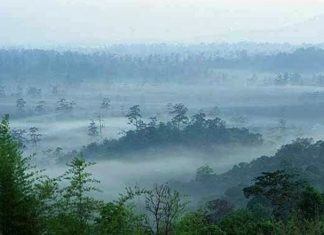Thousands of holidaymakers have been caught up in floods in southern Thailand where at least 14 people have died. Some hotels in Koh Samui, the second most popular resort in Thailand, have lost water and power in the past few days, forcing guests to go elsewhere. Chris Lee of the Tourism Authority of Thailand said some had gone to other resorts, including Phuket, and to Bangkok. After days of constant rain, rising water levels have also caused damage in other beach resorts including Koh Pha Ngan and several beaches have been closed. “There has been quite a lot of disruption in Koh Samui where there will be thousands of holidaymakers, said Lee. “It’s important from a trade persepctive to understand that this isn’t the best time of year to sell Koh Samiu, which has a different season from other parts of Thailand. “It’s not unusual for Koh Samui to get a lot of rain at this time of year, which is why we would normally advise agents to sell Phuket instead. However, the rain we have seen over the past week has been exceptional.” The UK Foreign Office updated its travel advice today, saying: “There is currently widespread flooding in southern Thailand, including in Koh Samui, Krabi, Trang, and Koh Phangan, and other areas frequented by tourists; if you’re travelling in these areas you should monitor local media and follow the advice of the local authorities.” No tourists were reported killed or injured but parts of 11 southern provinces were declared disaster zones by local authorities. An estimated 94,000 people have been severely affected. “There has been heavier rain than usual which has caused drainage problems. Swimming is out of the question,” Nongyao Jirundom from the Tourism Authority of Thailand in Samui told Reuters. Trang has suffered its worst inundation in 30 years, according to local reports and large areas of several provcinces including Phuket, Surat Thani and Krabi are under water. Floods had also destroyed the main rail line to the south which links Malaysia. The flooding will likely affect travel around the country as Thailand gears up for the peak tourist season, which begins this month, however Lee said the flooding was likely to be only a short-term problem. “The damage caused is really to the power and water supplies, so once these are restored we don’t envisage further problems,” said Lee. “I don’t think it will affect Christmas.” Despite the disruption tourism officials still expect a record 32.4 million arrivals by the year-end.
Thailand government said the flooding in the southern region might possibly cause leptospirosis and the Provincial Public Health Offices are yet to watch out for the people who might be infected from a direct skin contact with contaminated water or bacteria through open wounds or soft skins.
All areas in the southern region are now under the 15-day watch-out period for possible infection of the disease after the floodwater has subsided.
The public health officials are also preventing a spread of conjunctivitis which could possibly be infected from dirty water in the eyes or close contacts with patients.
Symptoms of conjunctivitis include redness and irritations in the eye, excessive tears, eye wax and the swelling around the eye. The disease can be prevented through good hygienic practices such as washing hands frequently, isolating patients and their personal items from others and keeping off insects.
Patients with conjunctivitis are advised not to buy and apply any medicine by themselves but to seek immediate medical treatment and refrain from bathing in any shared water sources to prevent an outbreak.
The general public in flooded areas are being informed of other possible infections commonly found during and after flooding such as diarrhea and flu.
According to the Bureau of Epidemiology, a total of 2,083 leptospirosis patients were found in Thailand from 1 January to 4 December 2016. Of that number, 610 resided in the southern region with 14 fatalities. The number of conjunctivitis patients from 1 January to 6 December 2016 totaled 117,331


























